Weirdest Foods From All Around the World
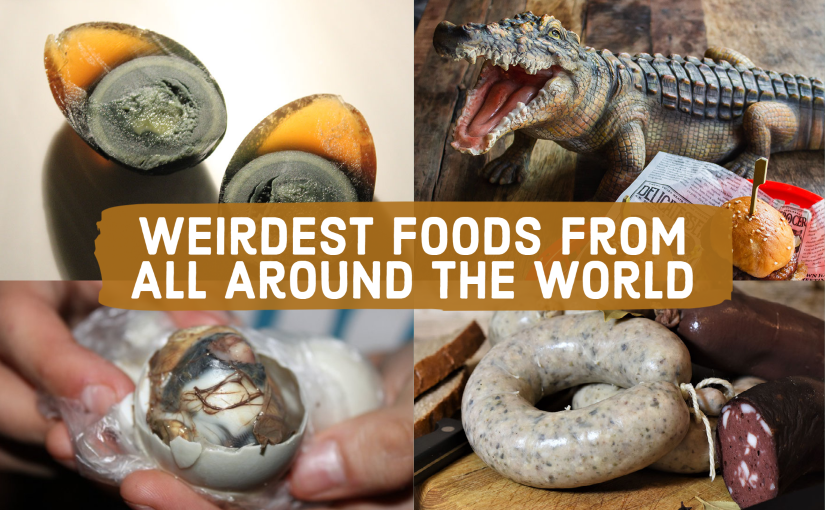
I’ve said it before and I’ll say it again: one of the best things about traveling to different countries is all of the different foods you come across. There’s nothing better than being in a new place, interacting with the locals, and feasting on a meal you may have never come across had you been back home. I mean who wants to pass up all of the spices and flavor in Phillipino cuisine just to eat McDonald’s. That being said, McDonald’s all over the world reflect the country they’re in and have unique items on the menu which I always make a priority to try but it definitely wouldn’t be my go-to my entire time trip.
I’ve had laksa that warmed my soul in Malaysia, shared a platter of biryani with strangers in India, and fried my own fish in Ghana. Though the delicious tastes and flavors have stayed with me well after my trips have ended, it’s the memory of how happy I felt in those moments that I really reflect on. Having a nenek teach me how to prepare the laksa or laughing with the strangers I shared the meal with in India have all molded me into the person I am today and it’s one of the things I most appreciate from my travels.
On the other end of that spectrum, I’ve also come across some wacky foods that I never had the guts to try. Consider this article to be a PSA on some of the weirdest foods in the world so that you don’t act shocked, or worse, rude when you come across it. You don’t have to try anything you don’t want to, but at least dishes made from stink bugs or starfish won’t surprise you and catch you off guard. We’ll start off with a couple of bugs but the dishes mentioned in this article are going to include a lot more than a few spiders.
Grasshoppers in Thailand
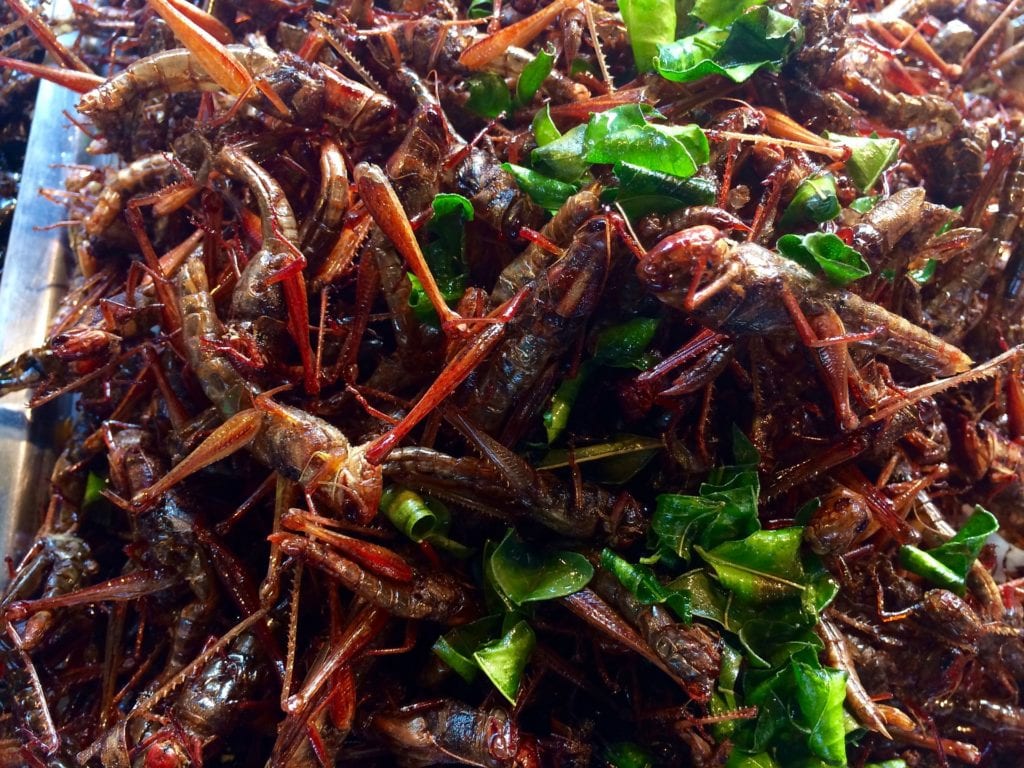
Alright, I think that by now everyone’s heard of grasshoppers being served in countries all over the world so it’s probably not that surprising. In Thailand, you’ll find grasshoppers being served around every corner – literally. There are streetside food carts filled with grasshoppers that people buy by the bucket and eat as a snack as they walk around. The grasshoppers are often deep-fried and then tossed in a mixture of chili powder, black pepper powder, and salt, and are considered a delicious evening or late-night snack.
I myself did not try it because all the bugs and insects creep me out but I’ve heard fried grasshoppers being described as those hollow popcorn skins you sometimes find in the bottom of the bowl, except it’s a little bit juicier when you bite into it.
Fried Spiders in Cambodia
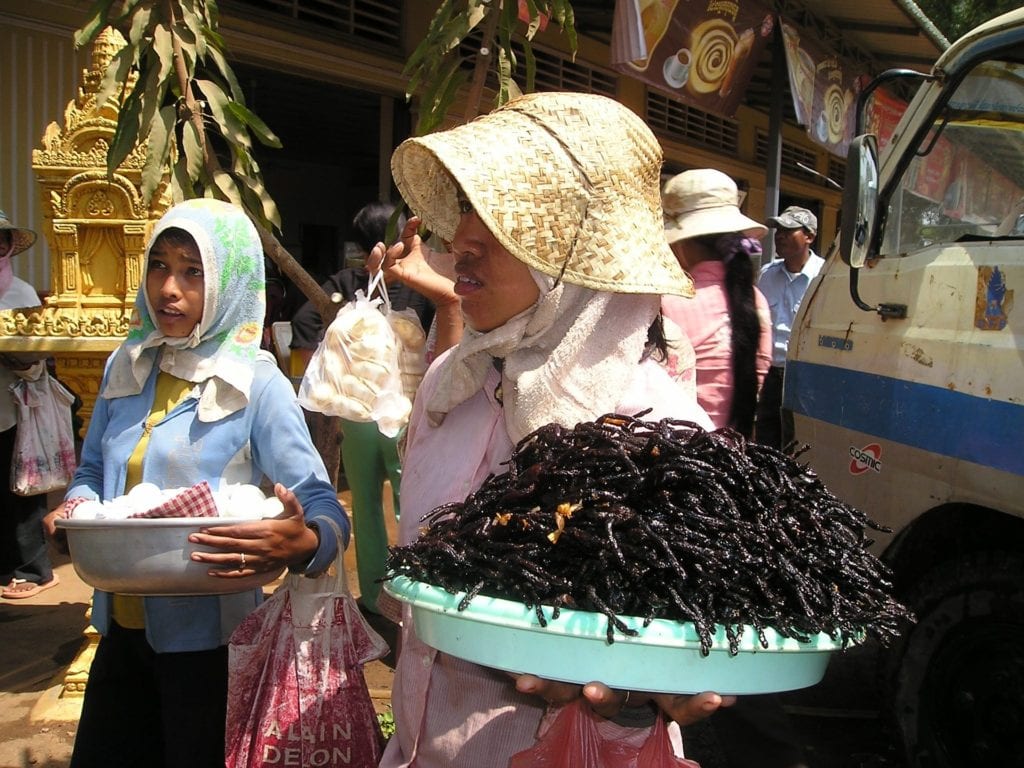
Another creepy crawly that people love fried and seasoned are spiders. When in Cambodia, we came across tons of street vendors who had these spiders ready for serving. You may not find it easily in restaurants per se, but street vendors in popular tourist areas are filled with them – especially in Skuon where busloads of tourists make it a point to stop and snack.
According to history, Cambodians first started eating tarantulas and other spiders because of the lack of food; they were starving under the Khmer Rouge regime and would eat anything they could get their hands on for sustenance. Funnily enough, fried spiders are now an extremely popular snack in Cambodia, and tourists from all over the world come to indulge in the delicacy.
The spiders aren’t the small, thin spiders you may see crawling in a corner of your house. Instead, these are giant ones, often tarantulas, that are fried whole – eight hairy legs, fangs, all of it. The spiders are tossed in a concoction of garlic, sugar, salt, and MSG before they’re immersed in hot oil, deep-fried, and served hot and crunchy. It’s said that fried spiders are meatier than other fried insects and the taste and texture have been compared to that of crab meat, but I’ll let you decide.
Kopi Luwak in Indonesia
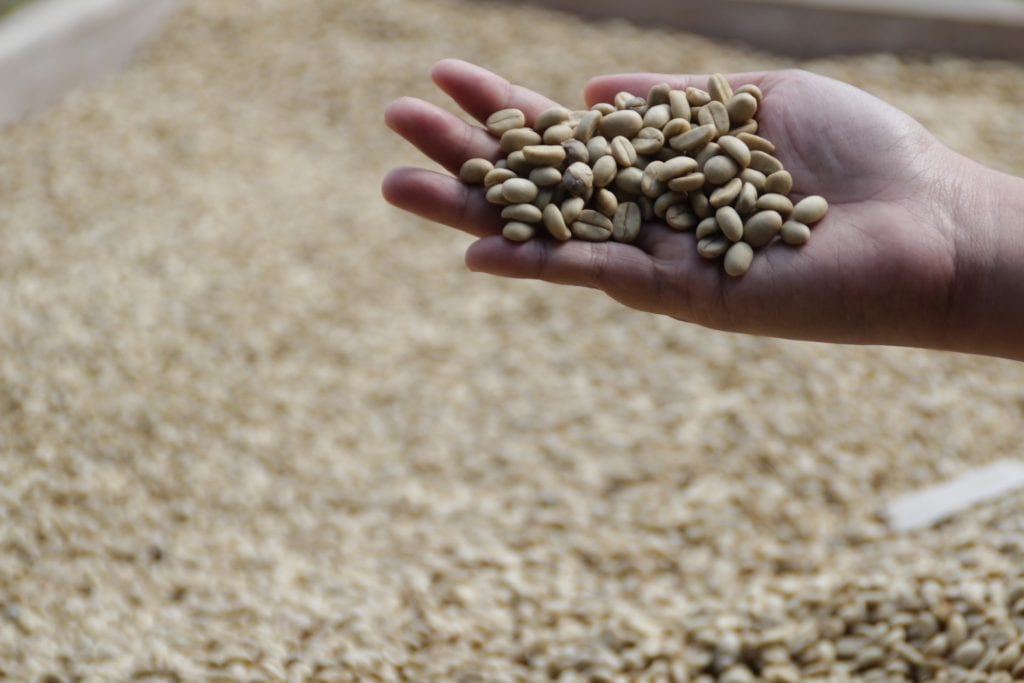
Kopi Luwak is a gourmet coffee blend that could run you anywhere from $150 to $300 per pound, so this won’t be one of the cheapest things you try when in Indonesia. It’ll especially take you off guard since the cost of food is otherwise very cheap and any other pound of coffee blend would probably average $10, if that. So why is Kopi Luwak so pricey you ask? The gourmet coffee is expensive because of how rare it is since it is made from the excrement of cat-like creatures called luwaks. Yes, you read that right, excrement.
The entire process is extraordinary so follow along: luwaks eat ripe coffee cherries but their stomachs can’t digest the beans inside them. The bean is instead fermented naturally by the luwaks’ stomach acids and enzymes and then comes out whole. The entire process gives the coffee bean a special aroma and flavor that is said to be unlike any other coffee bean you’ll come across at your local Starbucks.
This particular coffee is very popular in Indonesia and you can probably find a hot, steaming cup of it on the islands of Java or Sumatra.
Black Pudding (Blood Sausage) in Africa
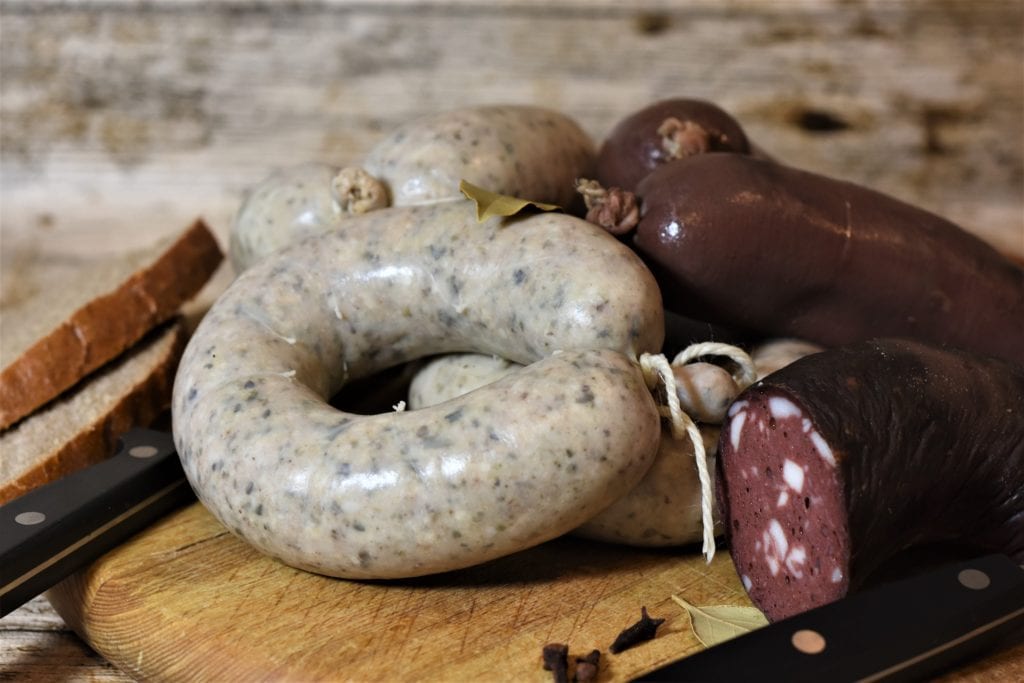
Okay, this isn’t on my palate of things I usually find appetizing but it’s not something I would pass up if the opportunity presented itself solely because there are so many people who swear that black pudding or blood sausage is delicious. The dish transcends a number of different cultures and countries but can often be found in the African continent so if you’re there on holiday, give it a go and tell us about the experience in the comments below.
So what exactly is black pudding? Black pudding is congealed blood that has a unique natural flavor which is highlighted by thickening it and stuffing it into a sausage skin. In my mind all I can think of is blood-flavored jello and I can’t imagine enjoying it but the sheer amount of people who stand by their opinion and consider it a delicacy is staggering and I want to try it for myself before I form any opinions.
Starfish in China
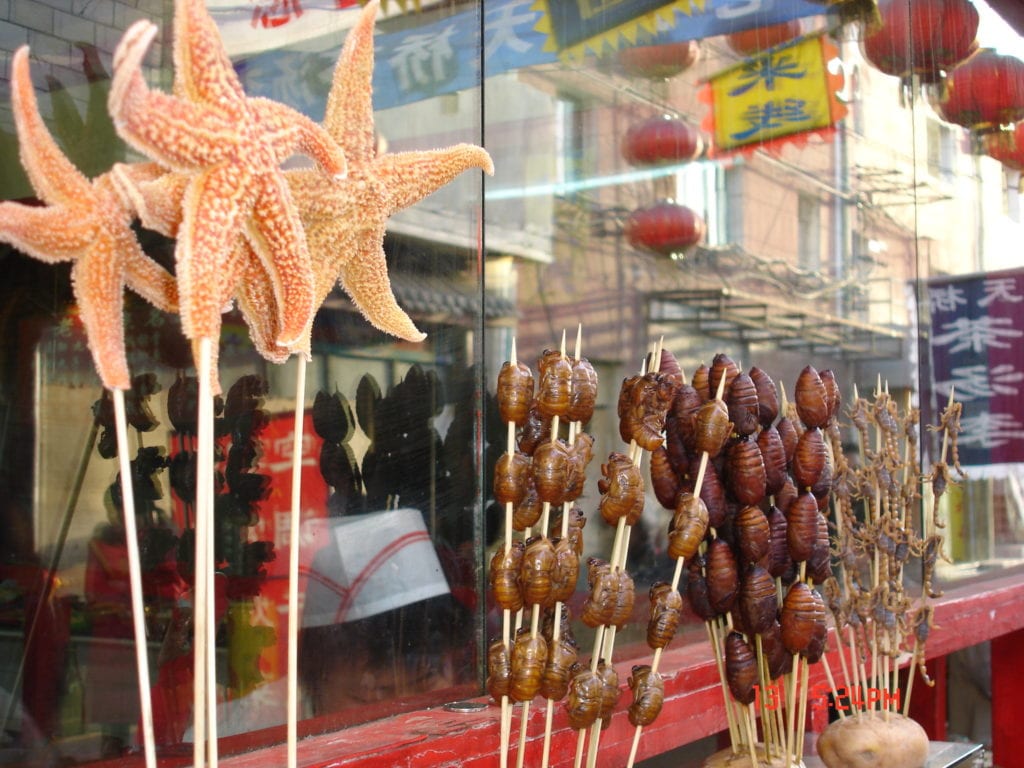
Don’t be surprised if you’re walking around China’s many food markets and see starfish served on a stick – I know it caught me off guard the first time I saw it! I believe that the snack is more of a tourist draw because you won’t find the dish on many menus or in street-side restaurants.
The starfish is often served boiled in saltwater or seasoned and deep fried. You do not bite into it, hard shell and all, but instead, you break off each leg or tentacle, peel back the skin, and eat the green/ gray colored meat that’s inside. There isn’t a lot of meat inside but from what I hear, the meat you do get out has the texture of toothpaste. People also say that starfish meat is pretty tasteless while others say it tastes like ocean water; either way, it’s often served with a sauce to add more flavor.
Century Egg in China
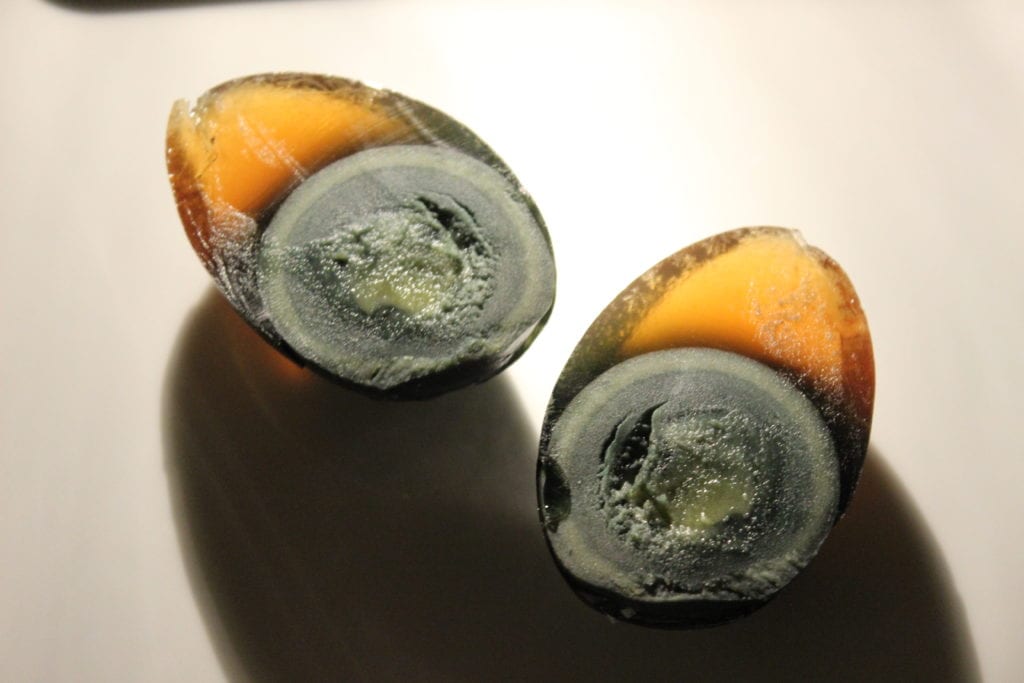
I don’t know who saw an egg rotten beyond measure and thought “yum!” but the century egg in China is exactly that – a really rotten egg. Don’t let the name confuse you though; the egg is often only a few months old and is now a really popular snack you’ll find all over China.
The egg is preserved in a concoction of clay, ash, quicklime, and salt for months at a stretch, during which time the york turns into a dark green, sometimes black, slime and the white becomes a translucent brown jelly. People say that though it reeks of ammonia and sulfur, century eggs just taste like hard-boiled eggs. I don’t know why anyone would overlook such a horrid smell just to eat something that tastes like a regular hard-boiled egg but hey, to each his own.
Balut in the Philippines
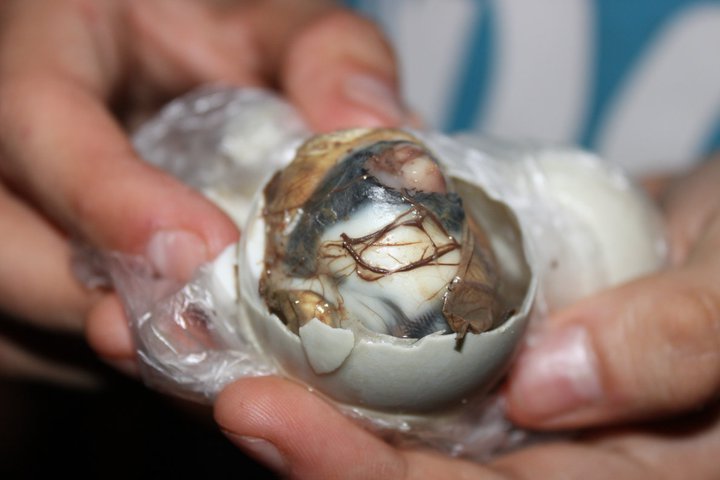
Another weird egg dish you may come across if you’re in the Philippines is the balut. I’m not going to sugarcoat it; to me, a balut looks very unappealing and I’m not sure how exactly it’s become a common street food popular with bar-goers after a night out. I guess they may need the liquid luck to stomach it but either way, you’ll find tons of people feasting on it. Just to give you an idea of how popular balut stalls in the Philippines are, compare it to hot dog stands in New York.
A balut is a developing duck embryo that is boiled alive in its shell; the eggs are boiled just before they’re due to hatch. After the fertilized duck egg is boiled alive, you tap a hole in the top to crack it and the embryo inside is seasoned with vinegar, salt, chili, lemon juice, black pepper, and/ or coriander. You then slurp whatever is inside through the hole – broth, bones, claws, feathers, all of it. Like a Kinder Surprise chocolate, but crunchier. The crunchy and gooey snack is full of protein and is popularly believed to enhance your libido and is usually guzzled down alongside an ice cold beer.
Tuna Eyeballs in Japan
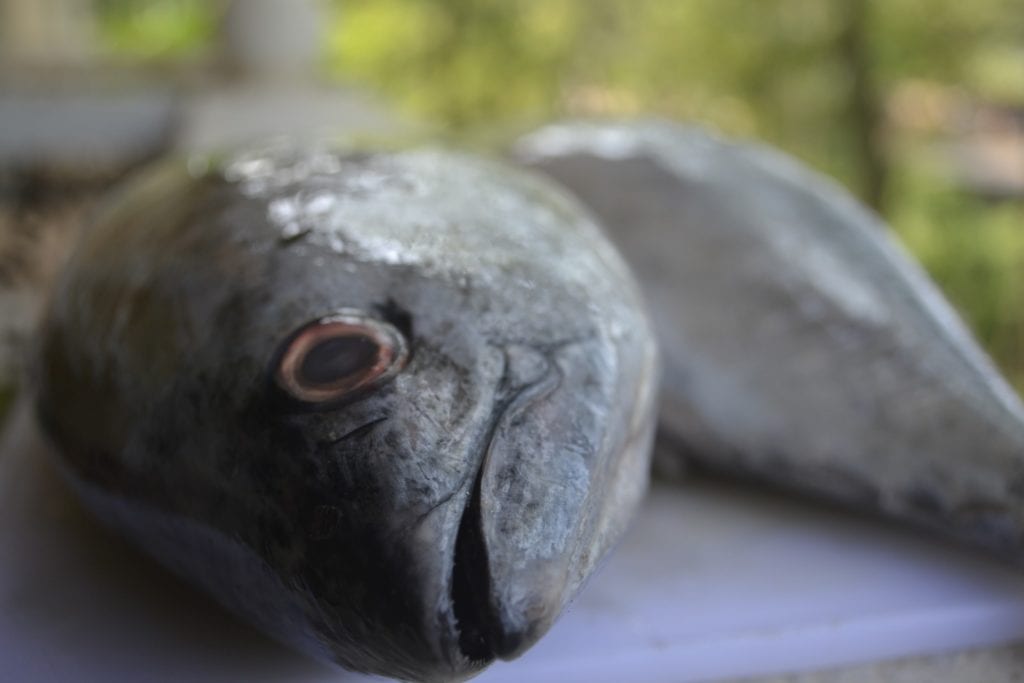
Unsurprisingly, many who have conquered this list of weird foods from around the world have considered tuna eyeballs to be one of the tamest items on the list. I mean, it’s part of a fish we eat anyway, sometimes even raw, so the eyeballs aren’t too far off. People say that tuna eyeballs taste very similar to octopus or squid, so if you’re a big seafood fan then this dish won’t take you too far away from what you’re used to.
You’ll find large tuna eyeballs sold in markets all over Japan and served in restaurants on every corner. They’re usually boiled or steamed and then flavored with soy sauce and fresh garlic. I have also seen them prepared as a soup made with coconut milk and green onions.
Wasp Crackers in Japan
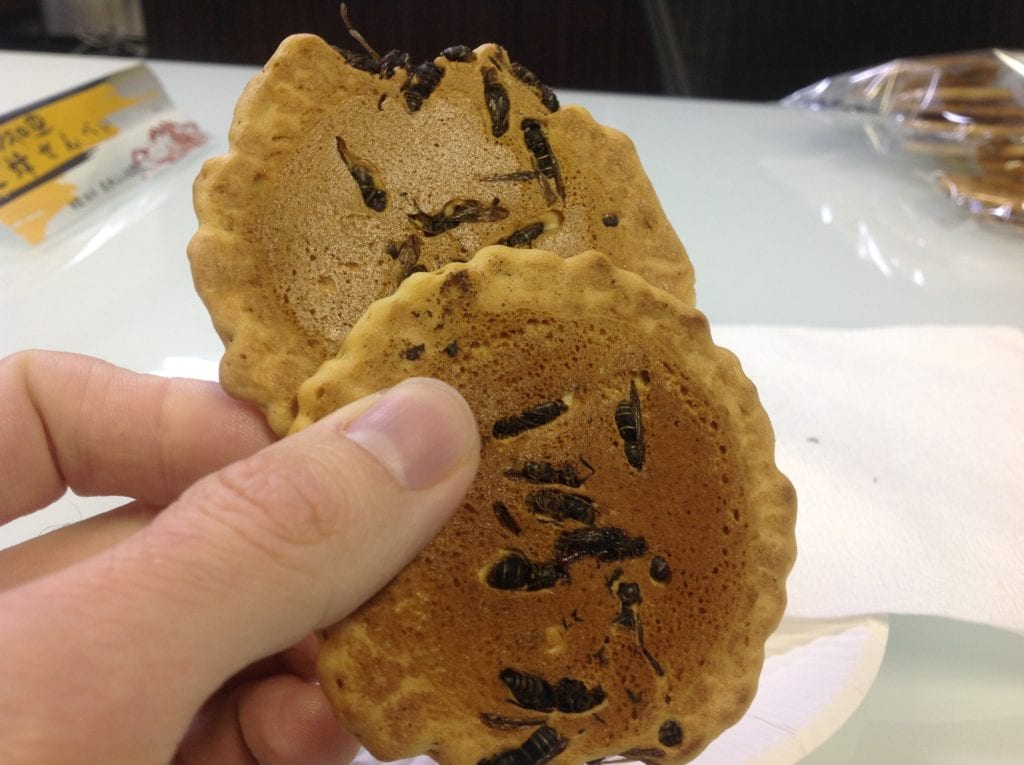
Japan is listed multiple times in this article and rightly so because the Japanese people seem to have a wild sense of culinary adventure. If the tuna eyeballs didn’t throw you off, then feast your eyes on wasp crackers. I don’t even know how this works but it turns out the digger wasps are rather large and have a pretty sharp stinger, and they’re baked wholly into the cracker – like chocolate chips in cookies, but not.
The entire idea came together when a Japanese wasp fan club merged ideas with a local cracker baker. The wasps are scattered into almost every bite of the rice cracker and are considered to be a delicious treat locally.
Fugu in Japan
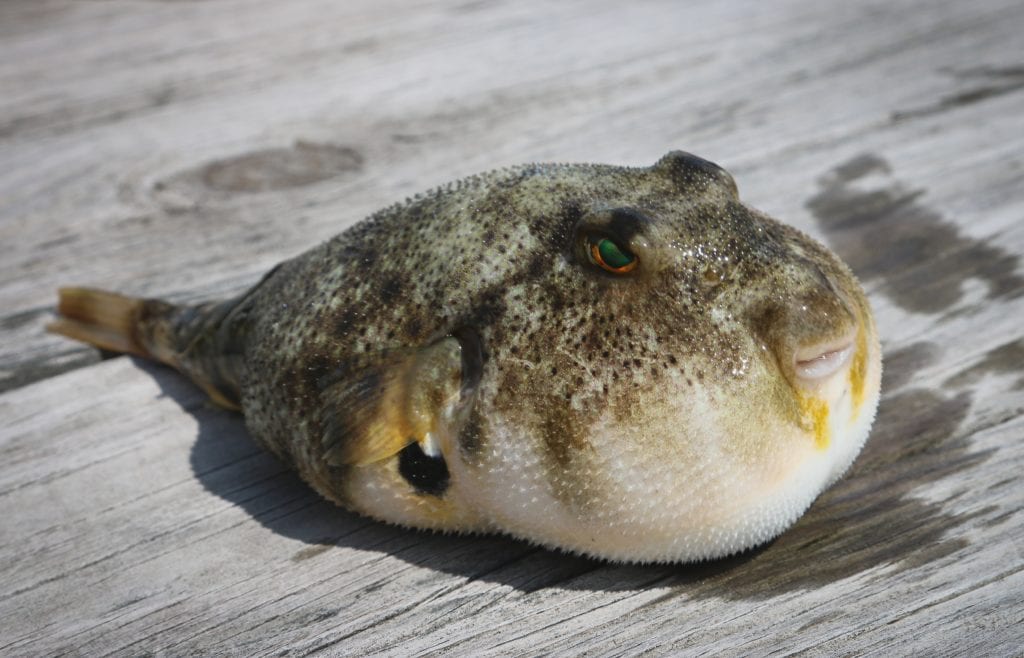
If you’re a fan of The Simpsons, you might recognize fugu as that fish that could have killed Homer if it was prepared incorrectly. Turns out the show was not being dramatic and that fugu, or pufferfish, will in fact kill you if it is not handled and prepared with the utmost care. I do not know why anyone would want to take the risk of eating something even remotely poisonous but so many people do that I’m guessing every bite is worth it.
Fugu is considered illegal in many countries because of the consequences if the dish isn’t prepared correctly. Both the skin and many internal aspects encase a poisonous toxin called ‘tetrodotoxin’ which is over a thousand times stronger than cyanide. Only licensed chefs that have been trained to perfection are allowed to handle the fugu. If one thing goes wrong, your night out on the town could end up with you in the morgue since there is no known antidote. Nothing, and I mean nothing, could make me want to eat something that could cause paralysis, asphyxiation, and eventually death, but hey, to each his own.
Jellied Moose Nose in Canada
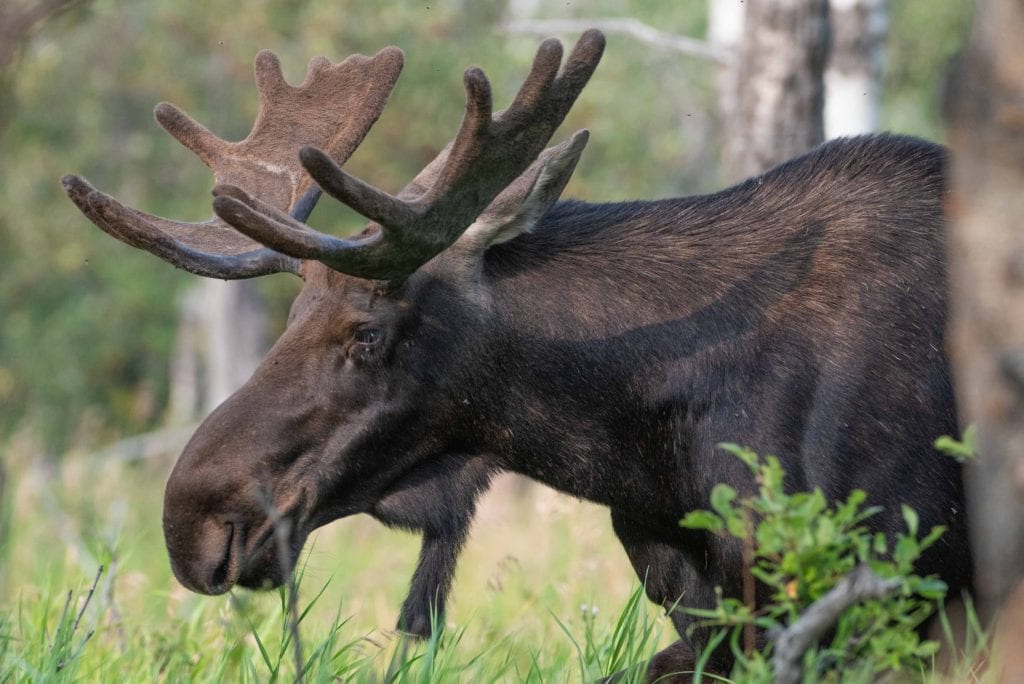
Just reading the name makes me gag a bit because jellied anything other than artificial fruit flavors makes me rethink the meal altogether. Turns out that Canadians are more adventurous with their cuisine than the more popular bacon and maple syrup.
So they take the nose and boil them with onions and spices and then they remove the hair. After which, they then cut the nose up into slices or chunks and cover it with a seasoned broth which eventually sets into a jelly. It’s sort of like a gelatinous fruit cake but instead of chunks of fruit, it’s chunks of moose nose. I don’t think I’ll ever be wild (or drunk) enough to try jellied moose nose because all I can think of is Bullwinkle but if that’s what floats your boat then go for it.
Hakarl in Iceland
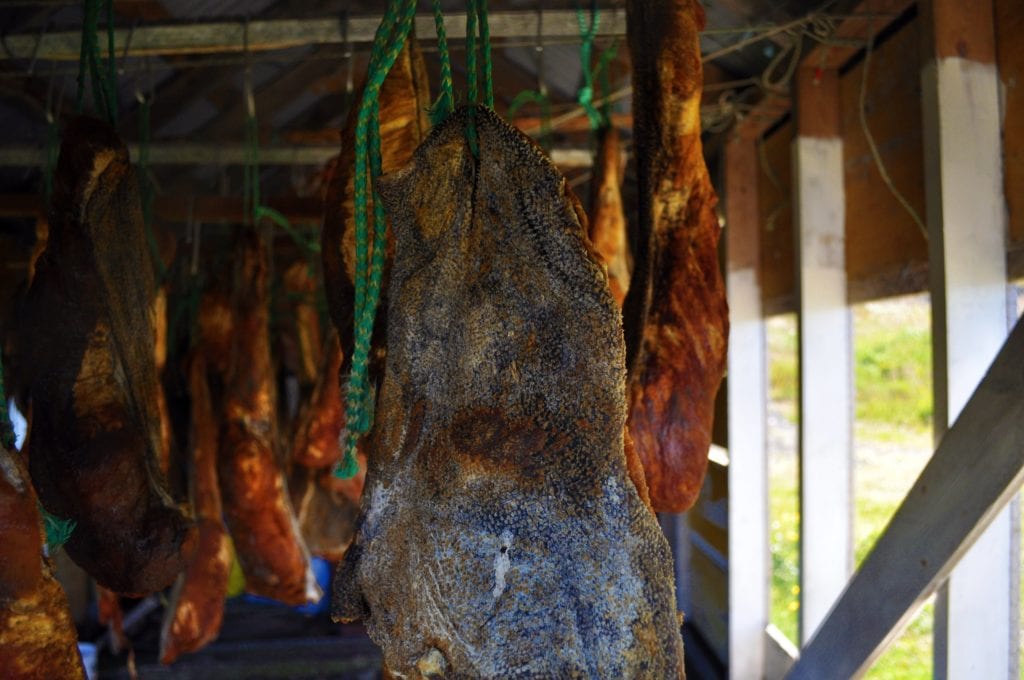
Anthony Bourdain loved foods from different countries and embraced different cultures wholeheartedly, but even he thought that hakarl was one of the most disgusting things he’d ever tried. I honestly can’t even figure out how hakarl came to be but it is now an Icelandic national dish that people come from far and wide to try.
So what exactly is hakarl? It’s basically the rotting carcass of a Greenland shark. You first gut and behead the shark and cut it into large pieces. People then take chunks of flesh and bury it in a shallow pit which they cover with sand and stones. The heavy stones are said to press the poisonous fluids out of the meat, making it safe to eat. The rotting meat is left in there for around two or three months before it’s taken out and hung to dry for some more time. It is then cut into strips and served like beef jerky but not.
More than the actual taste, I think it’s the smell that really throws people off. It’s been described as having an extremely strong ammonia-rich fishy flavor and you may want to hold your nose the first time you try it.
Stinkheads in the United States (Alaska)
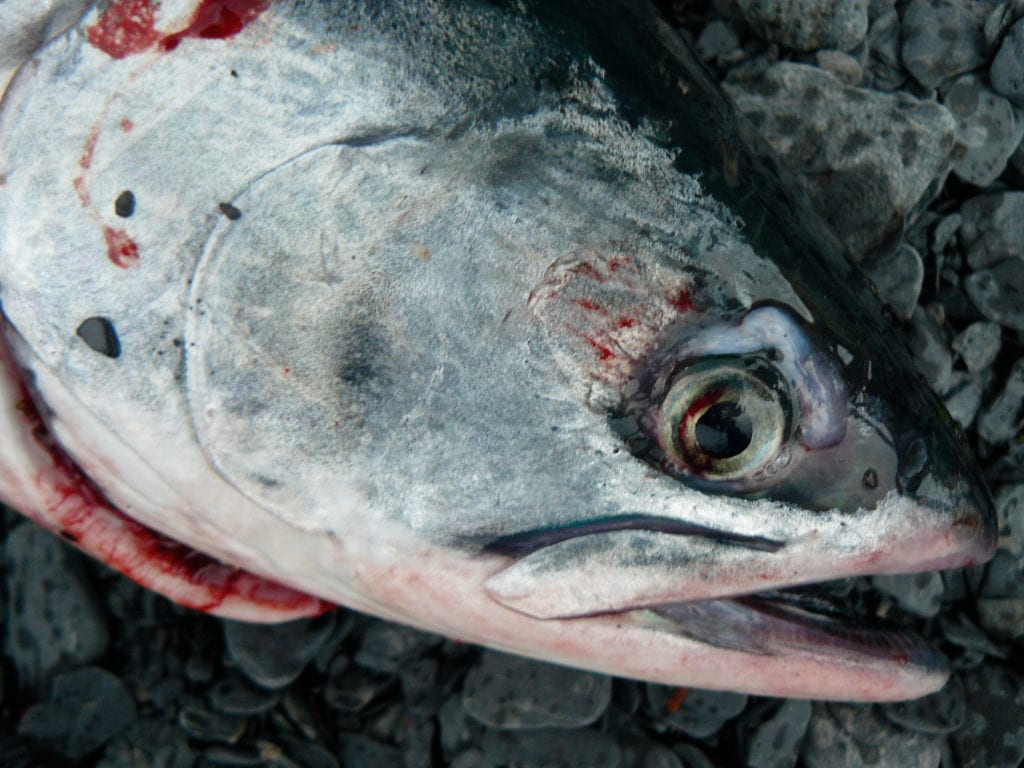
Turns out you don’t have to go all the way to Iceland to eat rotting fish that has been buried underground. Stinkheads are a popular meal in Alaska and my opinion is that it may actually be worse than the aforementioned hakarl; at least with hakarl it’s actual chunks of flesh, but with stinkheads, it’s just the rotting, fermented heads of king salmon. So it’s basically mushy head stuff that has a smell unlike anything else you may have come across.
Stinkheads are a traditional food of the Yupik people and the dish is a staple of the native Alaskan diet. Natives have often used all parts of an animal to ensure that there is no waste, especially when meats were scarce and preserved back then. It’s prepared by placing the heads of king salmon into fermentation pits which allow nature to do what it does best. While it may seem unpleasant to you and me, stinkheads were an important source of nutrition to natives and are now considered a treat.
Fried Rattlesnake in the United States (Southern States)
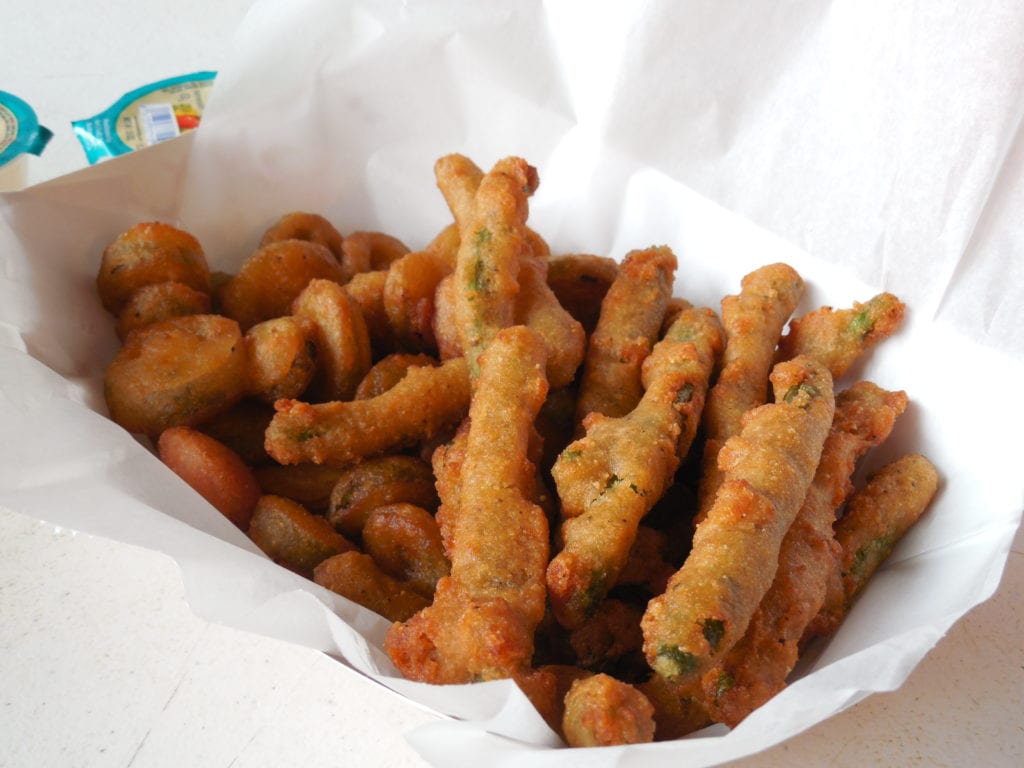
Okay, let’s be clear – you can’t walk into a restaurant in the nation’s capital and expect to find fried rattlesnake on the menu. Instead, you’ll find fried rattlesnake in southern states such as Arizona, Texas, and New Mexico. It’s so popular that you’ll find an array of recipes online, some from famous restaurants while others are family recipes that have been passed down generations.
One of the most popular ways of preparing fried rattlesnake is by boiling the meal till it falls off the bones and then mixing it with seasonings, eggs, flour, and breadcrumbs, almost like you would when making crab cakes. You then deep fry the entire thing and serve with your choice of sauce, which is often ranch dressing. I’m a fan of things deep fried and I wouldn’t pass up the opportunity to try this when I’m in the south.
Chicken Feet in the Caribbean
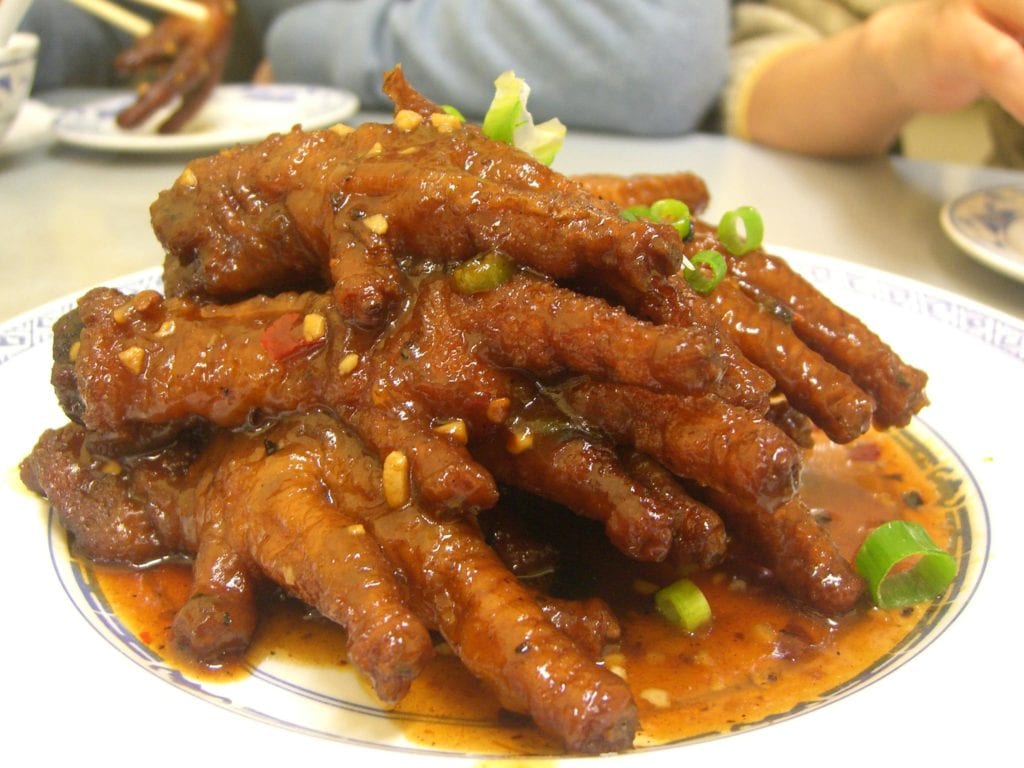
I remember walking around my local Asian grocery store and coming across chicken feet for the first time. Nicely packaged and right next to the drumsticks and ground chicken meat were packs of only chicken feet, nails and all. I was surprised at seeing it but quickly remembered a dish my friend from Jamaica had once prepared using chicken feet. Though I never made an effort to try it, nor do I think I could ever master cooking it myself, I definitely don’t think chicken feet are the weirdest of items on this list and I may not be so quick to judge it the next time I come across it.
Chicken feet are prepared in several continents from South America to South Africa and can often be found in homes and restaurants in the Caribbean or East Asia. Since there’s very little meat on it, you’ll mostly be eating skin that has a bit of a jelly-like texture when cooked. People say that they’re quite tasty if seasoned well but the bones can get a bit annoying the more you eat.
Khash in Eastern Europe
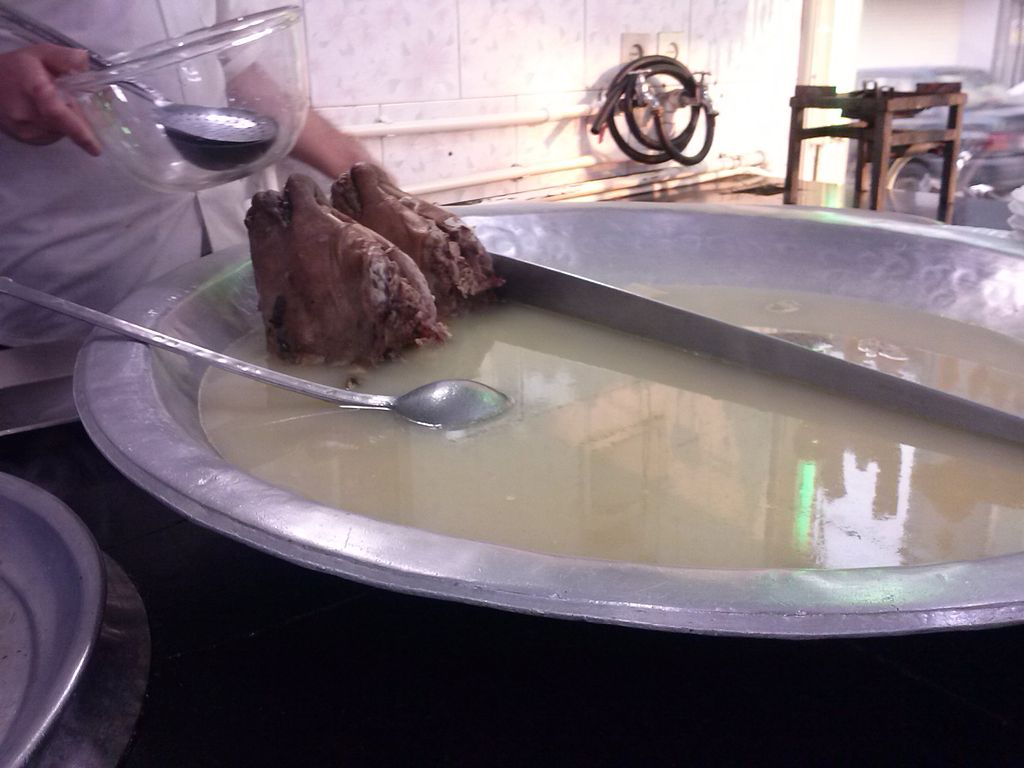
Khash is a concoction made from boiled sheep or cow parts, often using the head, feet, and stomach of the animal. The stew is one of those dishes that actually tastes better than it looks. I mean, who wants to look down at their meal and see the head/ skull of a cow or sheep looking back at them eyeballs and all.
That being said, it’s otherwise just a broth/ soup/ stew type dish that’s quite tasty since it’s filled with onions, peppers, and spices like chili powder and cumin. Other than looking a little gruesome, khash is considered a comfort food during the cold season and is now considered a delicacy. The Armenian national dish is also considered to be a tried and tested hangover cure so definitely worth the try after a night out!
Steak Tartare in France
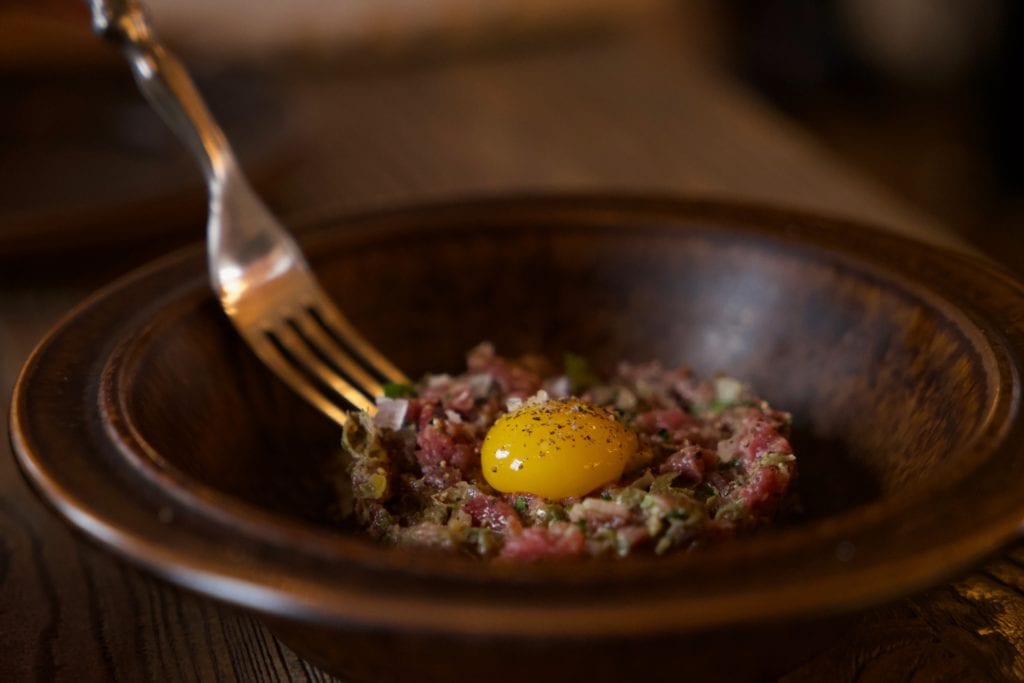
If you like your steak served rare, blue rare, or even raw, then you’re going to love steak tartare; don’t be confused by the name though since it’s not a steak at all. Steak tartare is a dish made of high-quality raw ground beef or horse meat seasoned with Worcester sauce and topped with a raw egg yolk, capers, and onions.
You’ll pay top dollar for it in France, though be prepared for waiters to question whether you actually know what it is and whether you really want it or not every time you order. I’m not really a fan of eating anything raw other than sushi and sashimi and this dish doesn’t look very appetizing to me but it is world-renowned. In fact, you don’t even have to go to France to try it and can find the dish in restaurants all over the United States.
Crocodile Meat in Australia
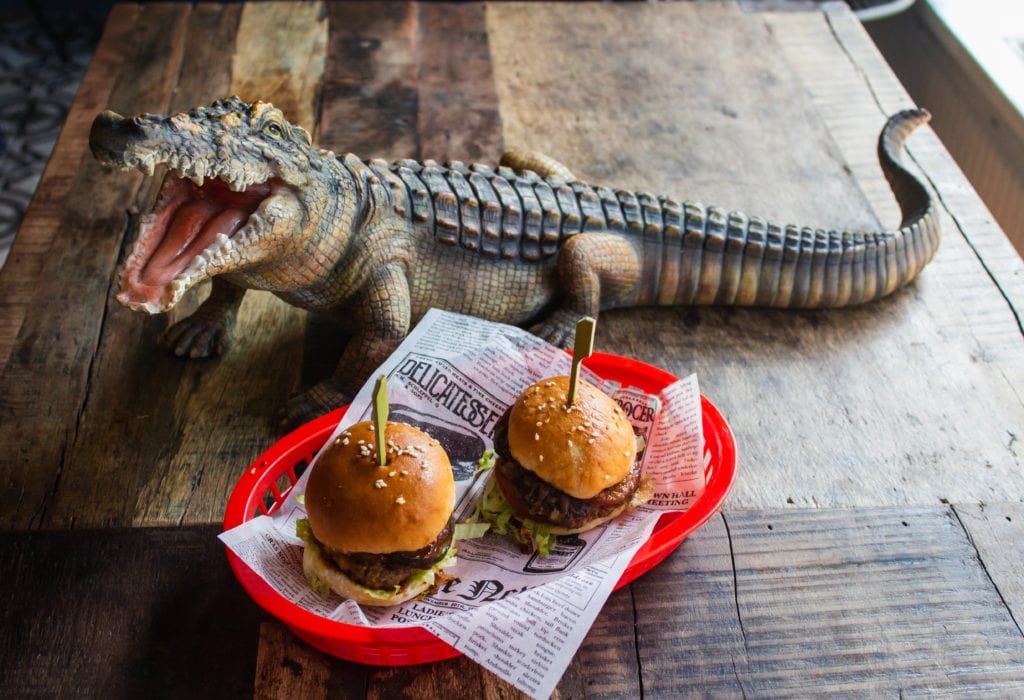
Though crocodile skin gained popularity in the shoe and belt industry, crocodile meat is actually delicious and often compared to juicy chicken or crab meat. In Australia, crocodile meat is farmed so that it doesn’t endanger the species and is more sustainable – though this isn’t always the case in other countries and there are laws against harvesting crocodile meat.
Crocodile meat is a highly sought after protein that is very low in fat and cholesterol. It’s actually said to combat many diseases while boosting the immune system. Because there is no discerning smell, texture, or taste to the meat, you can easily integrate it into your favorite style of cuisine whether it be Chinese, Indian, or Western. One of the most popular ways it’s served in Australia is as a crocodile burger, crocodile steak, crocodile stir-fry, or as a crumbled crocodile tail filet.
Kangaroo Meat in Australia
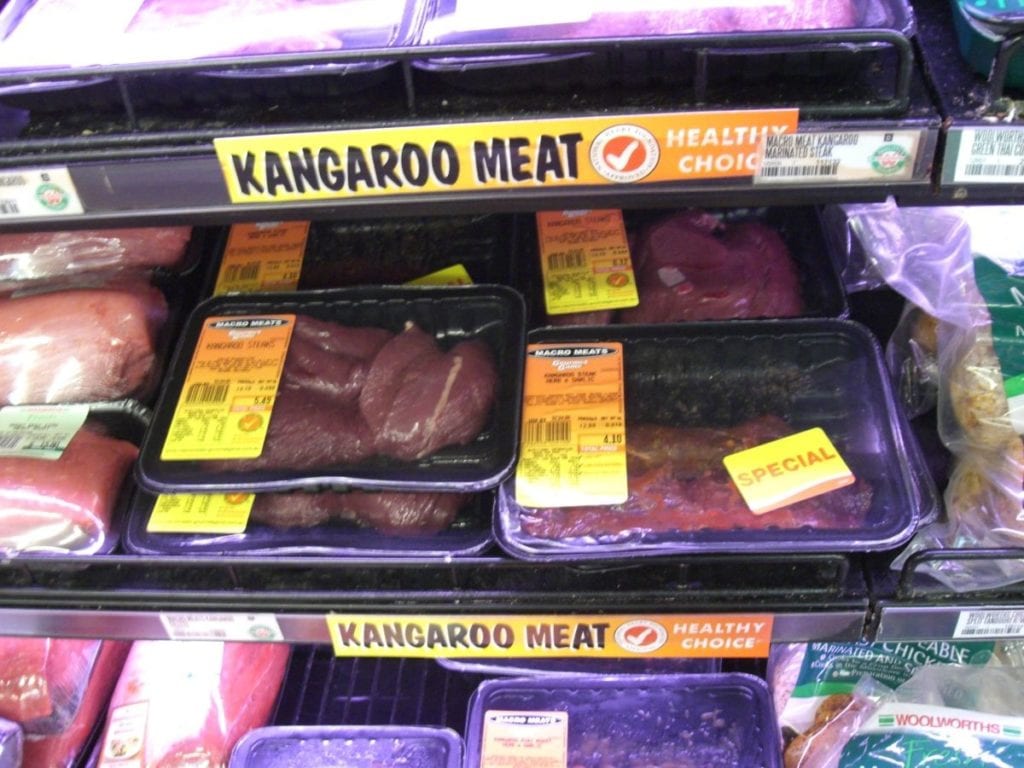
And if crocodile meat doesn’t satisfy your taste buds while in Australia, then try out kangaroo meat! Another meat that is low in fat and high in protein, kangaroo meat is a staple for indigenous Australians, though honestly, all I can think about is happy, bouncy Roo from Winnie the Pooh.
You’ll find the gamey meat in restaurants throughout Australia, often in the form of burgers, steaks, or sausages. The meat is described as being similar to venison, though not as tough. Kangaroo meat may not be the absolute weirdest food you’ll come across, especially in Australia where its availability is much more widespread.
Bird’s Nest Soup in Southeast Asia
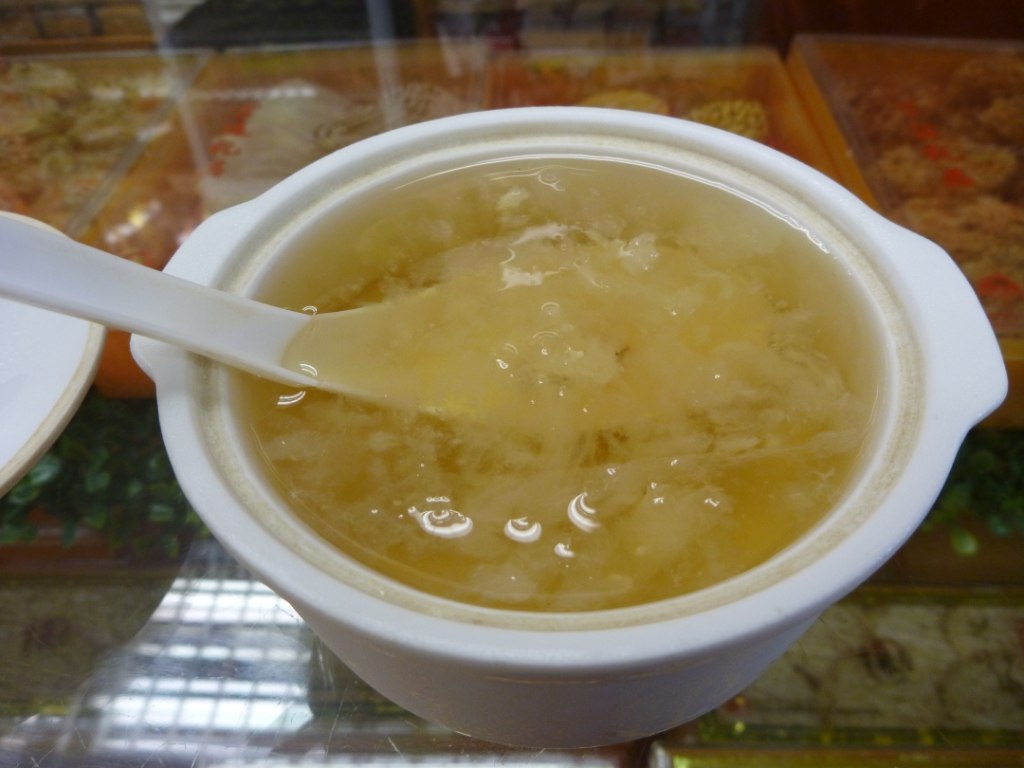
If you’re anything like me, you heard the words Bird’s Nest Soup and thought “why would anyone want to eat a soup made from twigs, leaves, and other random things birds collect and make their nests with”. Bird’s Nest Soup is a special dish made from the nests of swiftlet birds; these birds don’t build their beds from twigs but rather their own gummy and thick saliva which hardens when exposed to oxygen.
It was in China where people began using Swift’s nest as an ingredient in soup. The unique gelatinous texture of the saliva is considered a delicious treat and is often compared to the likes of Kobe beef or caviar. The price reflects the prestige as this saliva is very difficult to extract and one bowl of soup can range anywhere from $30 to over $100. This is because there is a very short season in which they build nests and these nests can only be harvested around three times a year. And also because swiftlet birds usually build their nests high up in coastal caves and the face of cliffs, making it a very dangerous endeavor to obtain them.
Many people die each year trying to get their hands on swiftlet nests; that, along with the high cost, the rubbery taste, and the fact that it is bird saliva makes me wonder if it’s all worth it. Traditionally, the story is that the saliva also has aphrodisiac qualities so maybe that’s what led to all of its fame.
Tripe in Nigeria
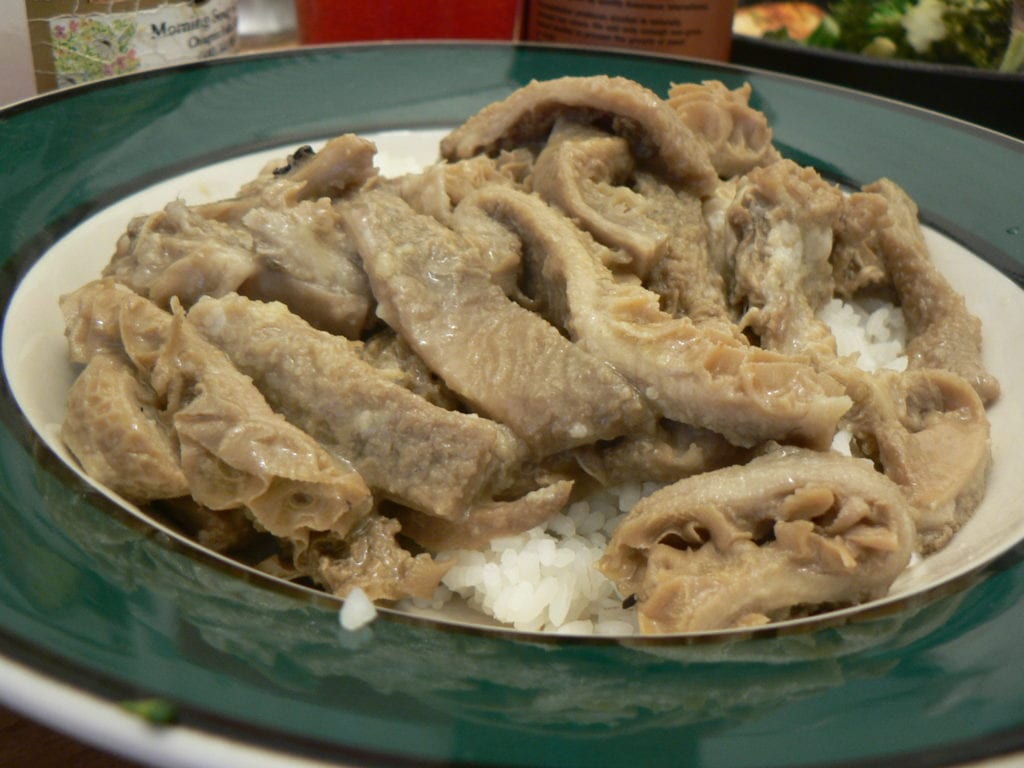
I have had tripe many times and cooked in many different styles. My Sri Lankan friends make a curry out of it that takes hours to cook while my Nigerian friends do a dry stir fry tossed in different spices and raw onions. You can often find tripe in your local Asian grocery store and it’s cooked and eaten in different styles all over the world.
That being said, it still doesn’t make it any less weird since tripe is the sponge-like stomach lining of animals, often cows. Having a honeycomb design and texture, tripe almost looks like something you’d find in the dark depths of the ocean. Once cooked, the meat becomes kind of rubbery and chewy but can be very delicious depending on how it’s prepared and served.
Cobra Heart in Vietnam
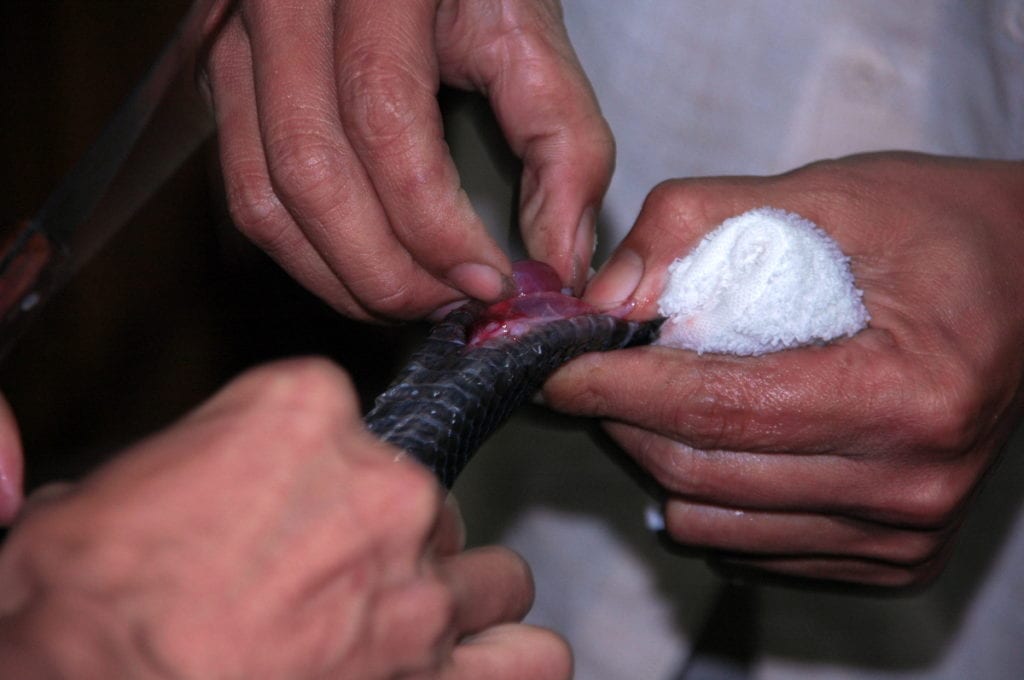
There are not enough words to express how I truly feel about eating/ drinking cobra hearts in Vietnam. Not only is it one of the weirdest foods from all around the world, but it’s also one of the craziest. Though I respect other cultures, their traditions, and their people, I’m not sure how much I support the cutting of cobras in Vietnam but here goes.
So, they take a live cobra and hold it down as it struggles and writhes to get free. They then cut it open right in front of you, pull out the beating heart, and put it in a shot glass complete with some of the blood and bile; some places also include a shot of vodka in the mix. You then drink it down like a tequila shot while the heart is still pumping. It is one of the craziest things to witness, let alone do for yourself.
One good thing is that nothing goes to waste. The entire cobra is then broken down and different parts are used to make different dishes. They make a soup with the snake’s skin, a curry out of the snake’s innards, and they even deep fry the bone for a crunchy snack. There’s even a video on YouTube of famous chef Gordon Ramsay downing the beating cobra heart and trying out the different cobra-based dishes while in Vietnam.
–
There are so many crazy cuisines in this world and if you find yourself in the opportunity to try something new, embrace it with an open mouth! If you’ve tried any of the ones I’ve mentioned, or even something different that I haven’t, share it with me and other readers in the comments below. Would you eat kangaroo meat in Australia or hakarl in Iceland? Let me know!
Short infographic about Weirdest Foods From All Around the World:

Weirdest foods from all around the world infographic